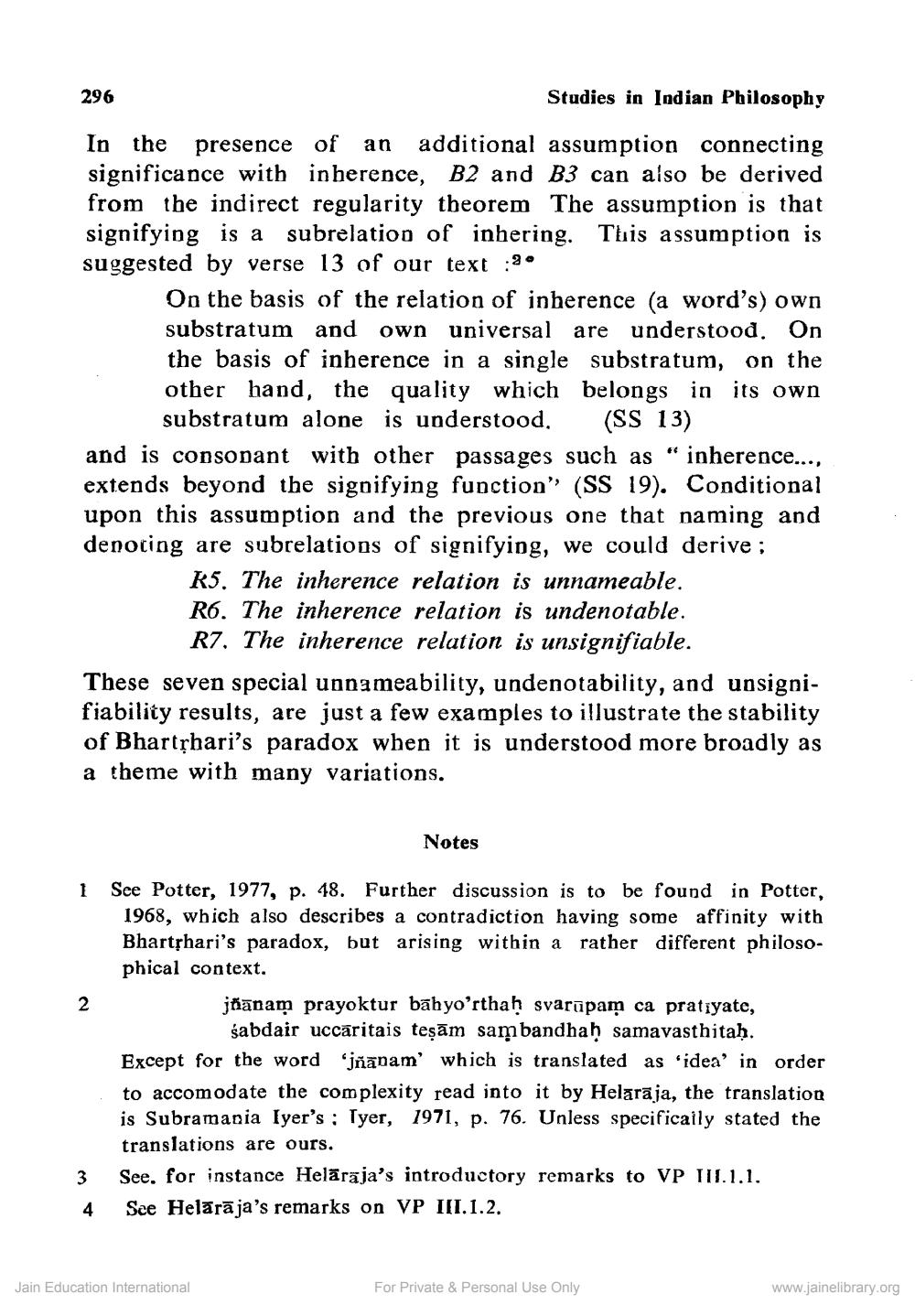________________
296
Studies in Indian Philosophy
In the presence of an additional assumption connecting significance with inherence, B2 and B3 can also be derived from the indirect regularity theorem The assumption is that signifying is a subrelation of inhering. This assumption is suggested by verse 13 of our text :90
On the basis of the relation of inherence (a word's) own substratum and own universal are understood. On the basis of inherence in a single substratum, on the other hand, the quality which belongs in its own
substratum alone is understood. (SS 13) and is consonant with other passages such as “ inherence..., extends beyond the signifying function' (SS 19). Conditional upon this assumption and the previous one that naming and denoting are subrelations of signifying, we could derive ;
K5. The inherence relation is unnameable. R6. The inherence relation is undenotable.
R7. The inherence relation is unsignifiable. These seven special unnameability, undenotability, and unsignifiability results, are just a few examples to illustrate the stability of Bhartphari's paradox when it is understood more broadly as a theme with many variations.
Notes
1
See Potter, 1977, p. 48. Further discussion is to be found in Potter, 1968, which also describes a contradiction having some affinity with Bhartshari's paradox, but arising within a rather different philosophical context.
jäānam prayoktur bāhyo'rthaḥ svarūpam ca pratiyate,
šabdair uccaritais teșām sambandhah samavasthitaḥ. Except for the word 'jñānam' which is translated as 'idea' in order to accomodate the complexity read into it by Helārāja, the translation is Subramania Iyer's : Tyer, 1971, p. 76. Unless specificaily stated the translations are ours. See, for instance Helāraja's introductory remarks to VP 1|1.1.1. See Helārāja's remarks on VP III.1.2.
3 4
Jain Education International
For Private & Personal Use Only
www.jainelibrary.org




